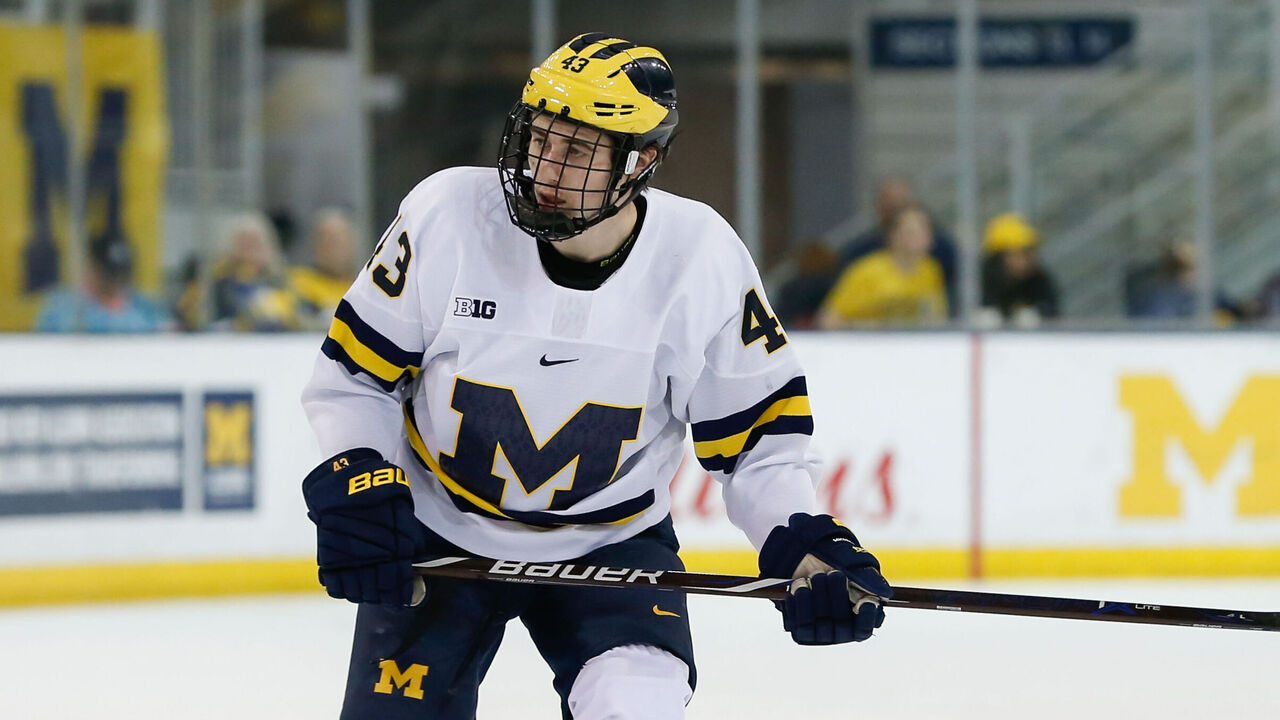Lawsuits aim to drag hockey into the modern labor era
Shedeur Sanders, Colorado quarterback and son of head coach Deion, will make an estimated $4.7 million this season thanks to sponsorship deals.
Dozens of other college athletes, from gymnast Livvy Dunne to basketball star Paige Bueckers to future NBA lottery pick Cooper Flagg, will be paid millions after U.S. courts ruled in 2021 that the NCAA could no longer prevent such licensing arrangements in the name of preserving amateurism. Such deals have proliferated across sports, with the amounts depending on athletes' marketability.
Yet a hockey player who appears in even one preseason game for a major junior team as a 16-year-old is ineligible for the NCAA due to its rules against professionalism.
It's an incongruity that may soon be ending.
The NCAA's approach to men's hockey players has long been a subject of criticism. It regards anyone who's played in the Canadian Hockey League, the umbrella organization for Canada's three regional major junior leagues, as having been a "professional" and thus bans them from American college sports.
The CHL, though, considers its players student-athletes and has gone to court successfully in Canada and the U.S. to confirm that those players aren't athletes. The only money they receive is a few hundred dollars a month to offset the cost of living away from home after they're drafted by a CHL team. (A scholarship package is also available, one year of school per season of service in the league.)
The argument over who is and isn't a professional is part of a decades-old fight between the CHL and NCAA over the development of young hockey talent. Where the NCAA is the default developmental league for pro football and basketball in North America, the majority of NHL players arrive there by first playing in the CHL. That trend has shifted over time, with stars such as Cale Makar, Quinn Hughes, and Charlie McAvoy playing college hockey, but the CHL remains dominant. The NCAA's lucrative scholarships, meanwhile, are only available to those players who avoid the CHL entirely.

A lawsuit filed in a New York court this week is seeking to change that. The proposed class action says the NCAA is breaking antitrust laws by preventing former CHL players from joining college hockey programs. It is early days, and none of the allegations have been tested in court, but it's just the latest legal action to have buffeted hockey's development programs.
In February, a lawsuit filed in a Manhattan court sought to essentially force the CHL to cease operations, arguing that its model was a violation of U.S. antitrust law (nine CHL teams are based in the country). That matter remains before the courts. Canadian courts have heard (and rejected) similar antitrust claims, but a class action lawsuit against the CHL that alleged a violation of minimum-wage laws was settled after more than a decade for $33 million. (The payout has been on hold pending an appeal in Quebec.) Attempts to unionize junior hockey players on both sides of the border have also been unsuccessful.
The common thread among all the efforts has been the argument that the CHL's 60 teams operate like professional outfits but without the player wages.
While the system has so far survived its many legal challenges, the pillars of the amateurism model are shifting. The NCAA's prohibition on former CHL players, the subject of the most recent New York lawsuit, is already thought to be nearing its end. College coaches expect the rules to change, with only the specifics yet to be determined. It seems like the only possible outcome in a world that now allows NCAA athletes to haul in seven-figure sums while still competing.
The three-year-old court ruling that triggered the change allowing sponsorship deals, meanwhile, has had a cascading effect. NCAA athletes can now transfer between schools without penalty, having previously been forced to sit out a year. At least one team, Dartmouth men's basketball, has successfully unionized. Some observers expect the various changes will eventually prompt schools to treat athletes as paid employees, making formal what has for a long time been the third rail of U.S. college athletics.
All of which would make young hockey players that much more of an outlier. Football and men's and women's basketball players can earn money before getting drafted. Even in baseball, which infamously suppresses the wages of young players, there's now union representation for minor leaguers after a successful court challenge.
In that environment, will the CHL still be able to justify compensating the next Connor Bedard with a few hundred dollars a month? After all, he could just play for a junior team for a season or two before leaving for a college program in a hockey hotbed like Minnesota or Massachusetts. The earning potential would be considerable.
Change to hockey's long-established development system seems inevitable. The shockwaves are coming. The only question is how transformative they'll be.
Scott Stinson is a contributing writer to theScore